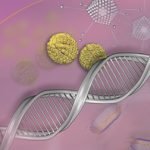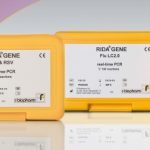The RIDA®GENE real-time PCR assays for the detection of Influenza (RIDA®GENE Flu, RIDA®GENE Flu LC2.0, RIDA®GENE Flu & RSV) detect the currently circulating drift variant of influenza A (H3N2).
This was evaluated with three influenza viruses of the new H3N2 variant: A/Bayern/1/2015 (A/H3N2), A/Sachsen/2/2015 (A/H3N2) und A/Nordrhein-Westfalen/1/2015 (A/H3N2).
For more information about current influenza variants click here.
About influenza
The influenza, also called flu, is the most common respiratory infectious disease whereby influenza types A and B cause the annually occurring influenza epidemics. The majority of influenza A infections in humans are caused by the H1N1 and H3N2 subtypes.
Worldwide, 3 – 5 million people are infected with influenza and approximately 250,000 – 500,000 die from this disease each year.
Characteristics of influenza viruses
Characteristic for influenza viruses is their high mutational variation (antigenic drift) of the surface antigens, hemagglutinin (HA) and neuraminidase (NA). This may lead to new variants of the different subtypes. In addition to the antigenic drift induced by mutation, new influenza A subtypes can be generated by reassortment of a human and nonhuman influenza A strain (antigenic shift), which may trigger a pandemic. For instance, the influenza A subtype H1N1 is associated with the past and potentially new influenza pandemics (e.g. the Spanish Flu in 1918/19; Swine Flu 2009).
By such an antigenic drift at least one new Influenza A (H3N2) variant currently circulates through which the currently used vaccine shows decreased efficacy.









